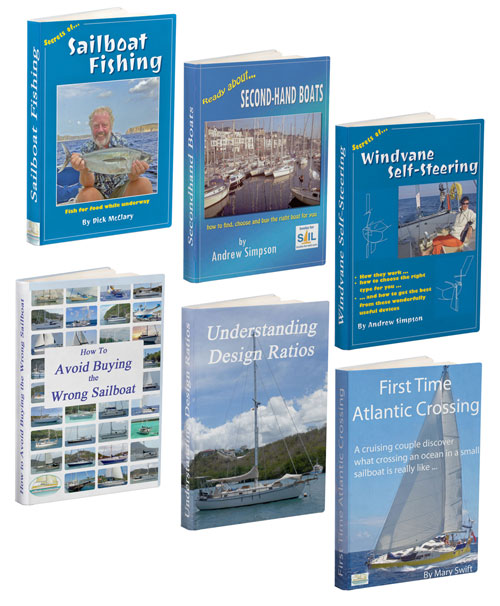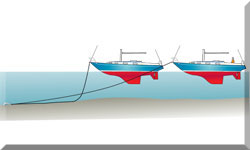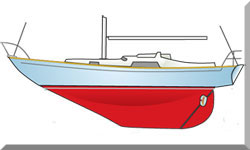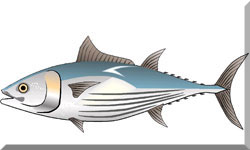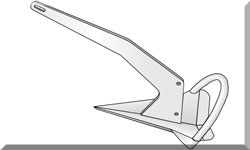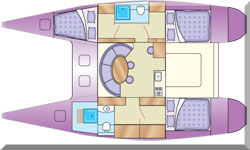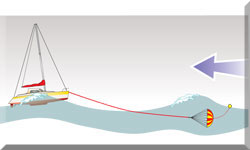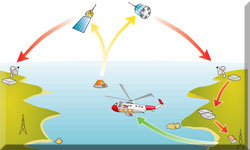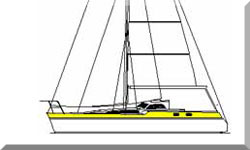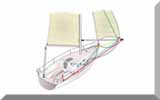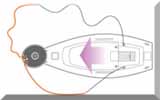- Home
- Choosing Accessories
- Sailing Drogue Issues
Sailing Drogue Issues: Your Questions Answered
Sailing through heavy weather can be tough, but a drogue can make a big difference. It helps slow your boat down and keeps it under control when the seas get rough. Still, figuring out how to choose, use, and handle a drogue can bring up a lot of questions.
That’s where this page comes in. We’ve put together answers to the most common questions so you can feel ready and confident. Whether you're planning a big trip, fine-tuning your storm strategies, or just learning the ropes, these tips will help you stay safe and in control when the going gets rough.
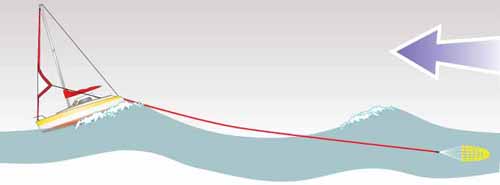 Drogues are always deployed from the stern
Drogues are always deployed from the sternWhat is the difference between a drogue and a sea anchor?
What is the difference between a drogue and a sea anchor?
Drogues and sea anchors serve distinct purposes, and understanding their roles is essential for sailors. A drogue is designed to slow a boat’s forward motion, helping it maintain directional control when running before strong winds and heavy seas. By reducing speed, it minimizes risks like surfing on waves or broaching.
In contrast, a sea anchor is deployed from the bow of the vessel to keep it oriented into the wind and waves while remaining stationary, making it ideal for stabilizing the boat during a storm when movement is not desired.
How do I properly deploy a drogue?
How do I properly deploy a drogue?
Proper deployment of a drogue requires careful preparation to ensure effectiveness and safety. Begin by inspecting the drogue, warp, and attachment points for any signs of wear or damage, as any weakness could lead to catastrophic failure in rough seas. Attach the warp to strong, reinforced points on the stern, such as towing bits or cleats, ensuring the setup can handle extreme loads.
It’s important to protect the warp from chafing by using chafe guards wherever it contacts the boat, as continuous friction can quickly degrade even robust lines. When deploying the drogue, do so gradually to prevent sudden shocks that could strain the equipment.
On larger vessels, using a bridle setup can distribute the load evenly, improving stability and reducing stress on individual components.
What size and type of drogue should I use for my boat?
What size and type of drogue should I use for my boat?
Selecting the right drogue depends on the boat’s size, weight, and intended usage. Heavier vessels require larger drogues capable of generating sufficient drag. For smaller or lighter boats, compact designs may suffice.
The type of drogue also matters. Parachute-style drogues provide substantial drag and are suited to extreme weather, while simpler cone-shaped designs are ideal for moderate conditions.
The Jordan Series Drogue, a popular choice among offshore sailors, uses a series of small cones along a long warp to evenly distribute loads, offering excellent performance in severe weather, though it requires more effort to deploy and retrieve.
Should I use a tripping line or a swivel with my drogue?
Should I use a tripping line or a swivel with my drogue?
A tripping line or swivel can enhance the functionality of a drogue. A tripping line simplifies retrieval by allowing the crew to collapse the drogue with minimal effort, a valuable feature in challenging conditions. However, care must be taken to prevent the tripping line from tangling during deployment.
A swivel is highly recommended as it prevents the warp from twisting and kinking under wave action, which could compromise the drogue’s performance and the warp’s integrity.
How do I calculate the strength and length of the warp required?
How do I calculate the strength and length of the warp required?
The strength and length of the warp are crucial for effective drogue use. The warp must withstand extreme loads, so its breaking strength should be at least four times the boat’s displacement weight. Nylon is a popular choice due to its elasticity and ability to absorb shocks, though high-strength, low-stretch materials like Dyneema are sometimes preferred for their durability.
The length of the warp is equally important. A general rule is to use a warp that is 5 to 10 times the boat’s length overall, as longer warps help dissipate energy more effectively, reducing snatch loads that could damage the equipment
What are the best practices for recovering a drogue after deployment?
What are the best practices for recovering a drogue after deployment?
Recovering a drogue after deployment can be challenging, especially in heavy seas, and following best practices ensures a safe and efficient process. Begin by reducing the boat’s speed and pointing the stern into calmer waters if possible to minimize tension on the warp.
Smaller drogues can often be retrieved by hand, while larger models may require the assistance of winches. Gloves should be worn to protect hands from the line under tension. As the drogue and warp are brought in, coil the line neatly to prevent tangling, and carefully inspect the equipment for wear or damage before stowing it.
Rinsing the drogue and warp with fresh water after use helps prolong their lifespan.
Can I use drogues for steering in emergencies?
Can I use drogues for steering in emergencies?
In emergency situations where steering systems fail, a drogue can act as a makeshift rudder. By deploying it off one quarter of the stern, it creates drag on that side, helping to turn the boat in the desired direction.
While this technique is not foolproof, it can be effective in lighter conditions and may buy time until permanent repairs can be made. Practicing this method in controlled environments allows sailors to familiarize themselves with how their boat responds to such adjustments.
What are the risks of using a drogue in extreme weather?
What are the risks of using a drogue in extreme weather?
Despite their benefits, drogues come with potential risks that sailors should be aware of. Extreme weather conditions generate enormous loads on drogues, warps, and attachment points. If these components are not sufficiently strong, failure could occur, potentially putting the vessel and crew at greater risk. Chafing is a particular concern during prolonged use, making chafe protection a critical consideration.
Additionally, deploying or retrieving a drogue in rough seas can be hazardous for the crew, so safety harnesses and secure lifelines are essential to prevent accidents. Having a backup plan, such as alternate storm management techniques or spare equipment, is always prudent in case the primary system fails.
Recent Articles
-
Which Type of Boat Fridge Is The Most Efficient?
Apr 24, 25 05:06 AM
The top opening boat fridge is reputed to be more efficient than the front opening type, but that may not be the case - and here, amongst other boat refrigeration considerations, is why -
Multihull Autopilot Selection is Not Straightforward
Apr 19, 25 01:25 PM
Whether its for a catamaran or a trimaran, tiller or wheel steered, a multi hull autopilot must be endowed with specific performance characteristics... -
Wheel-Steering Autopilots: Your Questions Answered...
Apr 18, 25 03:45 PM
Whatever your question, you should find the answer here
